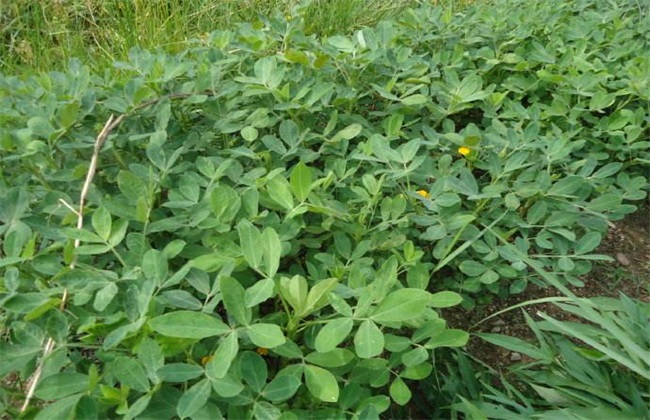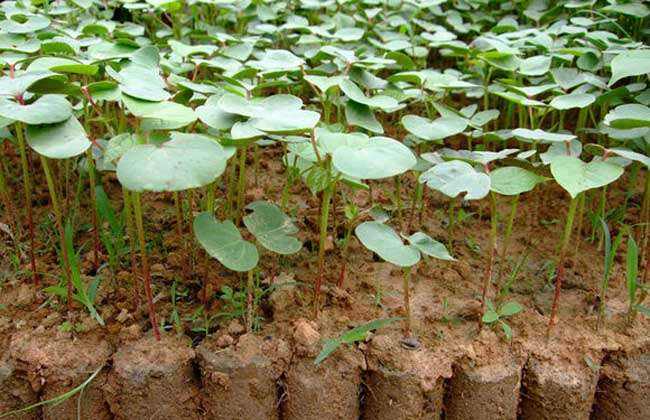How to manage the flowering and fruiting period of peanut
Peanut is a kind of food crop that many people like to eat very much, and it is also an important oil crop in our country. There is a very large planting area in our country, so when planting peanuts, we should pay attention to the management according to the growth period of peanuts. Especially in the flowering and fruiting period of peanuts, it is necessary to pay attention to it. So how to manage during the flowering and fruiting period of peanuts? Let's take a look at it together.

1. Drought resistance and seedling protection
Although the drought tolerance of peanuts is relatively strong, if the soil moisture is not enough for the critical period of water demand, it will inhibit the growth of peanuts and affect their flowering and fruiting. When the soil is too dry, the flowering rate of peanuts will decrease significantly, and when it is serious, it will stop blooming. And the fruit needle in the soil can not expand normally, affecting the development of the fruit. Therefore, if the soil water content is insufficient, then must be timely watering, watering mainly by sprinkler irrigation. It can not only save water, but also ensure that water can seep into the soil smoothly.
2. Foliar topdressing
After the peanut seeds are sown, the original stored nutrients will be consumed about a week after emergence. At this time, the root of the seedling does not have sufficient nutrition for the growth and development of peanut. And it will also affect the reproduction of root rhizobia, coupled with peanut plants at this time is in a critical period of branch and leaf growth, flower bud differentiation and so on, which also needs a lot of nutrients. Therefore, after peanuts enter the flowering stage, the demand for fertilizer will further increase, and attention should be paid to the supplement of nutrition, mainly foliar topdressing, potassium dihydrogen phosphate and so on.
3. Ploughing and weeding
After peanuts enter the flowering stage, we should also pay attention to doing a good job of ploughing and weeding. The main purpose of mid-tillage is to improve soil permeability, soften soil, promote peanut root growth and nutrient absorption, and provide guarantee for peanut flowering and fruiting. And this is very beneficial to peanut fruit needle binding, but also can improve the peanut fruit range and yield. In the middle ploughing, we should also do a good job in weeding to avoid the loss of too many unnecessary nutrients caused by too many weeds in the field, and increase the flowering and fruiting rate of peanuts.
4. Pest control
During the flowering and fruiting period of peanuts, the prevention and control of diseases and insect pests is also very important. Diseases and insect pests have a great impact on the flowering and fruiting of peanuts, among which the common diseases and insect pests in peanut flowering and fruit stage are leaf spot, stem rot, cotton bollworm and so on. Most of the main damage objects of these diseases and insect pests are the stems, leaves and fruits of peanuts. Therefore, we must pay more attention to the fact that different diseases and insect pests should be controlled with different insecticides. For example, leaf spot disease is usually treated with carbendazim or carbendazim, while stem rot is mainly caused by root Yibi or copper acetate.
The above is a brief introduction to how to manage the flowering and fruiting period of peanuts. That's all for today's introduction. This article is for reference only. I hope it can help you all.
Related
- The first cup of black tea in spring, the flavor and history of tea gardens in Kenya, Africa
- The computer can not only choose potatoes, but also grow tea rice. AI will grow winter oolong tea champion.
- It is not only the inflated tea bitten by insects, but also engraved with the four seasons tea in Beipu.
- The Oriental Beauty Tea Festival in Zhuxian County takes the stage at the weekend to experience the plus-size feast of oil tea.
- & quot; Oriental Beauty Tea & Exploration of Emei in Hsinchu, the hometown of quot;
- The new variety of strawberry "Tainong 1" dessert is the first choice with mellow aroma. Crimson gorgeous
- History of Tea in Taiwan: from Wild Inner Mountain to Export Tea Garden
- Two types of Taiwan Oriental Beauty Black Tea won the British three-Star Award for Childhood Tea Xiang Zhang Jiaqi changed from pilot to champion tea maker.
- Banana species and varieties: the planting history of Taiwan Xianren banana and dwarf banana is long, is banana disease resistant?
- Coffee planting Technology: Qianjie Coffee from Seedling to harvesting



